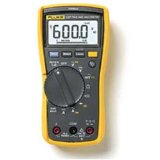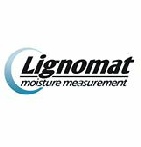Search This Site
Search With Google
There is always moisture in air in the form of water vapour. The warmer the air is, the more water vapour it can hold. To measure the amount of moisture in air one needs to refere to relative humidity. Relative humidity is a measurement of how much moisture is held by the air in comparison to the maximum amount of moisture the air can hold at a given temperature. For example air at 75% relative humidity holds three quarters of the moisture it is capable of holding at that particular temperature.
When air is warmed the relative humidity of it will decrease. Any air that leaks in to a building from outdoors in wintertime will warm up and the relative humidity of it will decrease. So in winter a building that leaks in a lot of air will have a very dry atmosphere.
When air is cooled the relative humidity of it will increase. Any warm air that leaks out of a house in wintertime will cool and the relative humidity of it will increase. So if warm air leaks out of a house in to the cold attic for example, condensation will be formed and moisture problems can occur in the attic and the walls of the building.
Air Leaks In To The Home
Air does not have to leak in to or out of a building to have its relative humidity changed or to form condensation. Cold surfaces are a great contributer to condensation.
In winter a buildings coldest surface is usually the windows. This is why condensation is very common on cold days.
Cold surfaces also cause condensation in summertime which may surprise you. Late Spring and early Summer are the most frequent times this occurs because the ground has not warmed up properly from the previous winter.
When the day is warm and humid you may find condensation on walls and floors that come in to contact with the ground. Opening windows and allowing air flow in may not reduce this condensation problem, but increase it in certain situations.
That is because you are allowing warm air in but the walls and floors are cold from the contact with the cold ground.
If relative humidity is high in a home during winter, condensation will form on cold surfaces. The air in homes can have an increased humidity level during winter from several moisture sources.
These sources can be ;
Just normal living and breathing can produce 30-
Drying firewood indoors can produce 15-
Showering, cooking and washing can produce 15-
A damp basement can produce 15-
Drying clothes indoors can produce 10-
Summer moisture absorbed by the home that is released in autumn can give 20-
As well as the contributing issues above any indoor humidity levels can be affected by air exchange. This replaces the moist indoor air with dry outdoor air.
How much air exchange in the home that takes place is dependant upon ventilation and air leakage.
It is the combination of the indoor moisture sources, any air exchanges and the number of cold surfaces in the home that will determine how much condensation is formed in your home.
Moisture -
Sponsored Links
Moisture Meter Guide 2010 Contact details:garnett65@hotmail.com


The complete moisture meter website
Moisture Meter Guide









Wagner Moisture Meters
General Tools MMD5NP Pinless LCD
General Tools MMD7003 Precision
General Tools MMD8P Multi Species
| Tramex Moisture Encounter Plus |
| Tramex Compact Wood Moisture Meter |
| Tramex Concrete Encounter Moisture Meter |
| Tramex Skipper Plus Moisture Meter |
| Tramex Roof And Wall Moisture Scanner |
| Sonin Digital Moisture Meter model 50218 |
| Sonin Digital Moisture Meter 270 model 50270 |
| Sonin Moisture Test Tool model 50210 |
| Sonin Moisture Test Meter Model 50211 |
| Oak |
| Douglas Fir |
| Beech Tree |
| Elm Tree |
| Hickory Tree |
| Maple Tree |
| Pine Tree |
| Prevent And Repair Gaps In Wooden Floorboards |
| How To Fix A Squeaky Hardwood Floor |
| How To Repair A Hardwood Floor That Has Buckled |
| Which Is The Best Firewood? |
| Concrete |
| Concrete Moisture |
| Screed Moisture Meter |
| SDS Drill |
| Belle Cement Mixer |
| SDS Drill Advice |
| Which SDS Drill |
| SDS Drill Accessories |
| Drilling Into Concrete |
| Kennedy Tool Box |
| Moisture - Basic Facts |
| Types Of Damp |
| Wet Rot |
| Dry Rot |
| Mold |
| Water Leak Detection |
| Stucco Moisture |
| Water Damage |
| Moisture And Rust |
| Moisture Damage To A Chimney |
| Wallpaper Stripper |
| Plaster Mixer |
| Why Worry About Moisture Problems |
| Does Your Home Have A Moisture Problem? |
| How To Solve Moisture Problems |
| How To Use Anti Mold Paint |
| Rising Damp |
| Condensation |
| Salt Damp |
| How To Avoid Bathroom Condensation |
| How To Remove Black Mold |
| How To Prevent Bathroom Mold |
| Soldering Kit |
| Soldering Kit Contents |
| Soldering Kit Advice |
| Bonsai Tree Classification |
| Growing Bonsai From Seed |
| Bonsai Tree Care |
| Bonsai Tree Training |
| Bonsai Tools |
| Displaying Bonsai |
| Bonsai Calendar |
| Bonsai Plants |
| The Thirsty Light Curve Moisture Meter |
| The Thirsty Light Ladybird Moisture Meter |
| The Thirsty Light Bumble Bee Moisture Meter |
| The Thirsty Light Butterfly Moisture Meter |
| Hanna Instruments |
| Agratronix Portable Coffee Moisture Tester |
| Lawn Aerator |
| Lawn Roller |
| Lawn Rake |
| Lawn Sand |
| Chainshot |
| Chainsaw Gloves |
| Chainsaw Trousers |
| Chainsaw Boots |
| Mac 4 - 20 XT Chainsaw |
| Mac 738 Chainsaw |
| Mac 842 Chainsaw |
| Mac 20X Power Chainsaw |
| Einhell BG-PC 3735 Chainsaw |
| Einhell BG-PC 4040 Chainsaw |
| Einhell BG-PC 5045 Chainsaw |
| Poulan P3314 Chainsaw |
| Poulan P4018 Chainsaw |
| Poulan Pro PP3816AV Chainsaw |
| Poulan Pro PP4218AVX Chainsaw |
| Poulan Pro PP4620AVX Chainsaw |
| Efco MT 4100 SP Chainsaw |
| Efco MT 3500 Chainsaw |
| Efco 132 S Chainsaw |
| Efco 147 Chainsaw |
| Efco 152 Chainsaw |
| Efco MT 7200 Chainsaw |
| Efco MT 8200 Chainsaw |
| Efco MT 3750 Chainsaw |
| Methods Of Obtaining Soil Moisture Levels |
| Hygrometer |
| Psychrometer |
| Rain Gauge |
| Wave Ventilation System |
| Humidity |
| Hygrometer For Keeping Reptiles |
| Humidor |
| Weather Stations |
| Musical Instrument Storage |